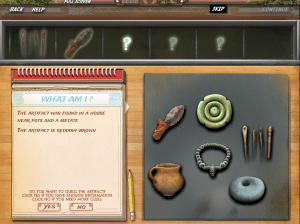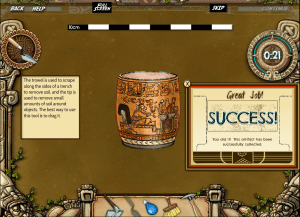My Student Blew Me Away!
Developing games to support our mission of bringing the benefits of game based learning to the classroom is often a challenge. What should be the next game we create? How do we balance education with fun? How do we help teachers get the professional development they need to use games in the classroom effectively? The encouragement we get from our users, reviewers and testers give us constant reasons to face these challenges, but it is the personal success stories that remind us why we do what we do.
This article is about Lisa Lewis, an education consultant that only recently decided to explore game-based learning. She chose our top selling game, Mayan Mysteries™, to use with one of her students. Mayan Mysteries has been recognized by reviewers as a best-in-class educational product, including a run as the #1 featured product for ages 9-11 on the Apple App store. Here, Lisa shares how the experience of using Mayan Mysteries was not only eye opening for her, but also such a rewarding way of learning for her student. If you ever thought the value of game-based learning in the classroom was a myth; this story might make you realize it is time to explore.
From: Lisa Lewis – Education Consultant
To: Dig-It! Games
A student I tutor, who is currently a 5th grader reading on a 3rd grade reading level, and is riddled with all types of learning challenges, showed me a thing or two the other day. I thought I would try something different with him and I introduced him to Mayan Mysteries on my laptop. Thinking to myself, there is no way that this student will be able to read, let alone comprehend the detailed information, I was hesitant to give it a try. But I also thought how would I know if I didn’t give it a try. The main question in my head was “How is he going to be able to maneuver his way through unfamiliar territory?” I certainly was not going to be any help, because this was so far from my own comfort zone.
As the student logged into Mayan Mysteries, I could tell he was intrigued by the graphics. His face lit up, as it has never done with me before. He is so accustomed to our structured lessons each week. We practice old and new vocabulary words, we read a text together and talk about it, and then we write using a prompt and a graphic organizer. I didn’t scaffold anything for the student about Mayan Mysteries. I merely said, “see what you can do”.
As he entered the Mayan civilization, he clicked through a few things to get to the actual listening and game part. He listened intently to the voice as it read the very complicated text to him. He watched with bated breath and totally disregarded anything I said to him. I was merely giving him encouraging thoughts as he continued to listen. Once the reading section was completed, the student proceeded to click on things and move them around on the screen according to the directions he was given. Once he had everything in the places he believed they should be, he clicked something and the words “You Were Successful” came up on the screen.

He continued on for another two parts of the game and was once again successful with both parts. I stopped him for a moment to say congratulations. I also asked him how he knew what to do. He couldn’t really tell me how he knew what to do. I was assuming it was merely instinctive for him to know what to do. I told him I was proud of him for maneuvering his way through the three parts that he had gone through. I told him I knew it wasn’t easy, but that he did a great job.

I asked him what he thought of the game. He said it was different than most of the games he had played. I also asked him if he learned anything. He said yes, but had a difficult time elaborating about what he had learned. This is pretty typical of this student. He usually gives one or two word answers and has a very slow processing time, as well as a severe memory issue. He cannot recall for me what he has done earlier in the day at school, unless it is related to his Chrome book or what he has done during recess.
I consider this to be a big Aha moment for me and for the student. He realized that he could accomplish something new and different. He also realized that video games could be both educational and fun. I learned that after all these years working in large groups, small groups and individually with children, that kids can still blow me away with what they can do when it comes to technology. Just another teachable moment for me!
Learn more about game-based learning from our FETC 2016 workshop slides
